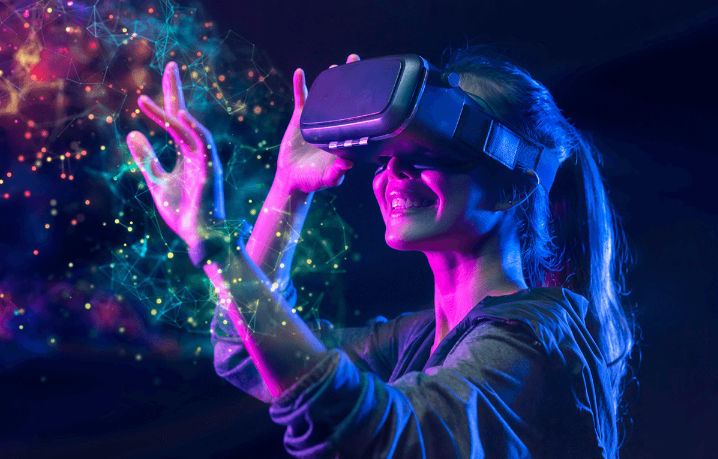
Understanding Virtual Reality: How It Works and Its Growing Significance
Virtual reality (VR) has evolved from a concept in science fiction to a groundbreaking technology with diverse applications. From gaming to education, healthcare to architecture, VR provides immersive experiences that were once unimaginable. In this post, we’ll delve into what virtual reality is, how it operates, and why it’s becoming increasingly important in various fields.
Defining Virtual Reality
Virtual reality is a computer-generated simulation of a three-dimensional environment that allows users to interact in a seemingly real or physical way. By using a VR headset or specialized equipment, users are immersed in a digital world that can either replicate reality or create entirely new experiences. The main aim of VR is to create a sense of presence or “immersion,” making the user feel as though they are truly inside the virtual environment.
How Virtual Reality Operates
The technology behind virtual reality is intricate, involving multiple components that work together to create an immersive experience. Here’s a breakdown of how VR functions:
Hardware Components
- VR Headsets: The core of any VR system is the headset, which usually contains two small, high-resolution screens (one for each eye) that display the virtual world. The images are designed to mimic human vision, offering depth and perspective.
- Sensors: VR headsets come equipped with sensors like gyroscopes, accelerometers, and magnetometers to track the user’s movements and adjust the visuals accordingly, keeping the experience immersive.
- Controllers: Many VR systems include handheld controllers that allow users to interact with the virtual environment. These controllers often feature buttons, triggers, and joysticks, and their movements are tracked to reflect the user’s actions within the VR space.
- Haptic Feedback Devices: Advanced VR setups may include gloves or suits that provide haptic feedback, giving users the sensation of touch through vibrations or pressure in response to interactions.
Software Components
- Rendering Engines: VR experiences are powered by rendering engines, which generate the virtual environment in real-time. These engines use sophisticated algorithms to create realistic lighting, textures, and physics, making the digital world believable.
- Tracking Systems: Crucial for maintaining immersion, tracking systems monitor the user’s position and movements, adjusting the virtual environment’s perspective and orientation to match real-world actions. This tracking can be internal (inside-out) or external (outside-in), depending on whether sensors are built into the headset or positioned externally.
- Software Platforms: Various VR platforms and development tools, like Unity, Unreal Engine, and WebVR, enable developers to create and distribute VR experiences across different devices.
Also Read
Types of Virtual Reality
- Non-Immersive VR: The simplest form, experienced through a standard computer screen, allowing interaction with a 3D environment without full immersion.
- Semi-Immersive VR: Often used in training and simulations, this type offers more immersion than non-immersive VR, typically through large screens or projectors.
- Fully Immersive VR: The most advanced form, fully enveloping the user in the virtual environment with a VR headset and other hardware, offering the highest level of immersion and interaction.
The Growing Importance of Virtual Reality
Virtual reality is more than just a technological novelty—it’s a powerful tool with significant implications across various industries. Here’s why VR is becoming increasingly important:
Transforming Education and Training
- VR is revolutionizing education by offering immersive learning experiences that engage students in new ways, such as walking through ancient Rome in a history lesson or exploring the human body in a biology class.
- In professional training, VR is invaluable. It allows surgeons to practice complex procedures without risk, pilots to simulate flights under various conditions, and engineers to work on virtual prototypes.
Enhancing Entertainment and Gaming:
- The gaming industry was an early adopter of VR technology, continually pushing the boundaries of what’s possible. VR gaming offers an unparalleled level of immersion, allowing players to step inside the game world and interact with it in previously impossible ways.
- Beyond gaming, VR is used in other entertainment forms, such as virtual concerts, movies, and theme park experiences.
Advancing Healthcare:
- VR is being utilized in healthcare for purposes ranging from surgical training to pain management. Virtual simulations allow doctors to practice complex surgeries, improving their skills and reducing the risk of real-life errors.
- VR is also being used in therapy, helping patients overcome phobias, manage anxiety, and recover from PTSD through controlled, immersive environments.
Changing Social Interactions:
- VR is creating new ways for people to connect and interact. Virtual social platforms allow users to meet, chat, and engage in shared experiences regardless of physical location, potentially transforming how we approach social interactions.
- VR can also offer a level of presence that traditional video calls can’t match, making virtual meetings more effective and engaging.
Innovating Design and Architecture:
- For architects and designers, VR offers a new way to visualize and refine their work. Instead of relying on 2D blueprints or models, they can walk through a virtual representation of a building or product, making real-time adjustments as needed.
- This ability to “experience” a design before it’s built can save time and money while ensuring that the final product meets expectations.
Challenges and the Future of Virtual Reality
While virtual reality holds immense promise, it’s not without challenges. High costs, technical limitations, and the need for more content are some of the barriers to widespread adoption. Additionally, some users may experience discomfort or motion sickness from prolonged VR use.
However, as technology advances, many of these challenges are expected to be overcome. With improvements in hardware, more affordable options, and the development of new content and applications, VR is set to become an integral part of our lives.
Virtual reality is not just a technological wonder; it’s a transformative tool reshaping how we learn, work, play, and interact with the world. By creating immersive, interactive experiences, VR is blurring the lines between the physical and digital realms, opening up new possibilities across countless industries. As we continue to explore its potential, it’s clear that VR will play a crucial role in the future of human experience.




